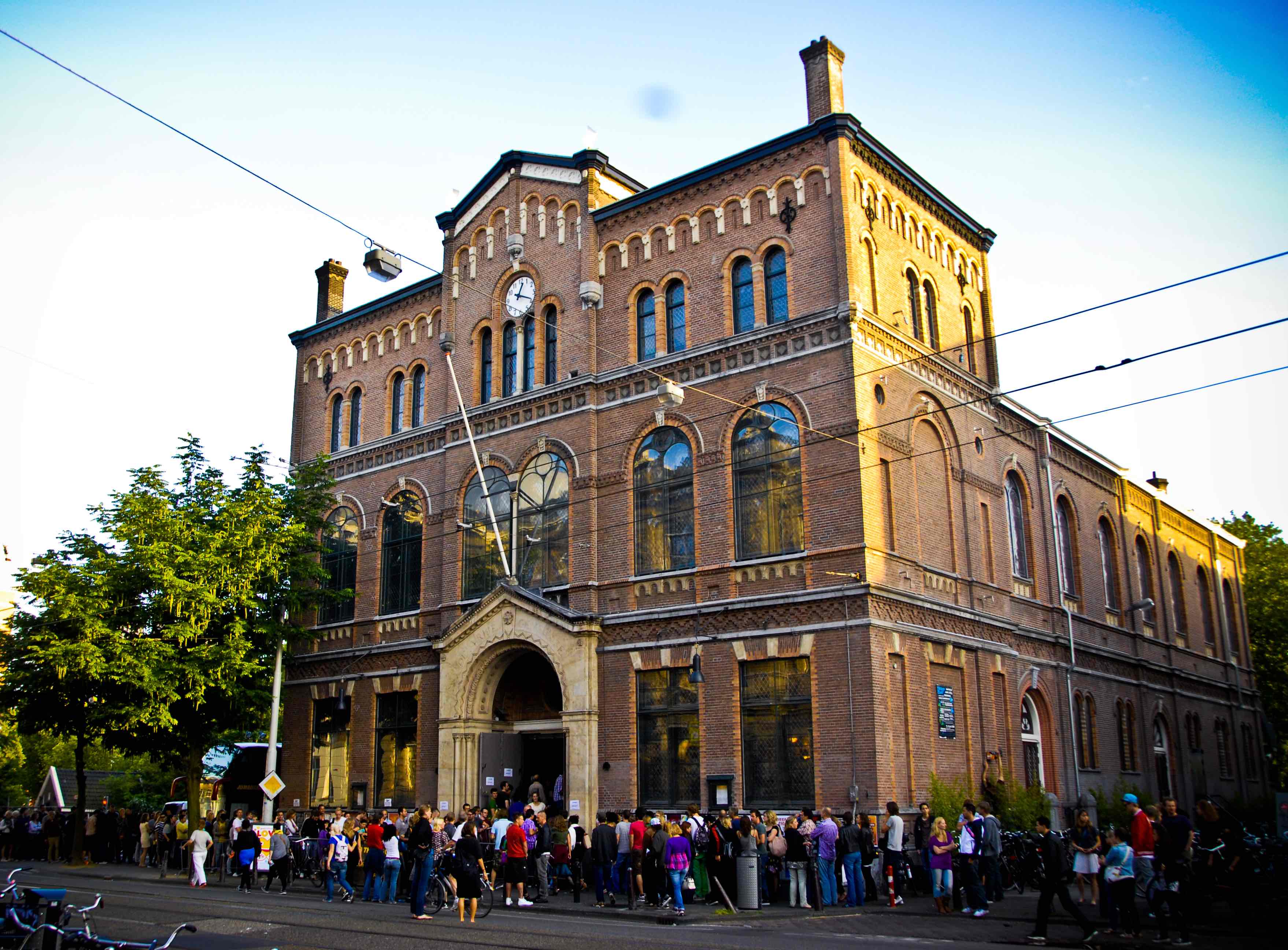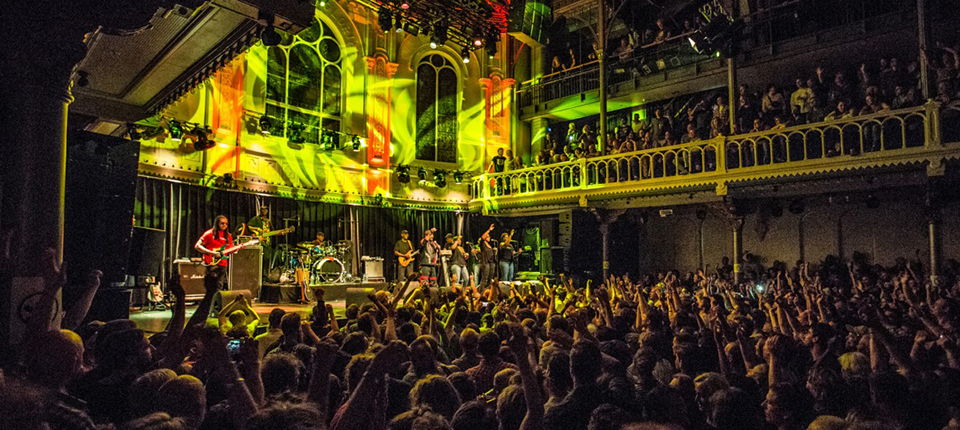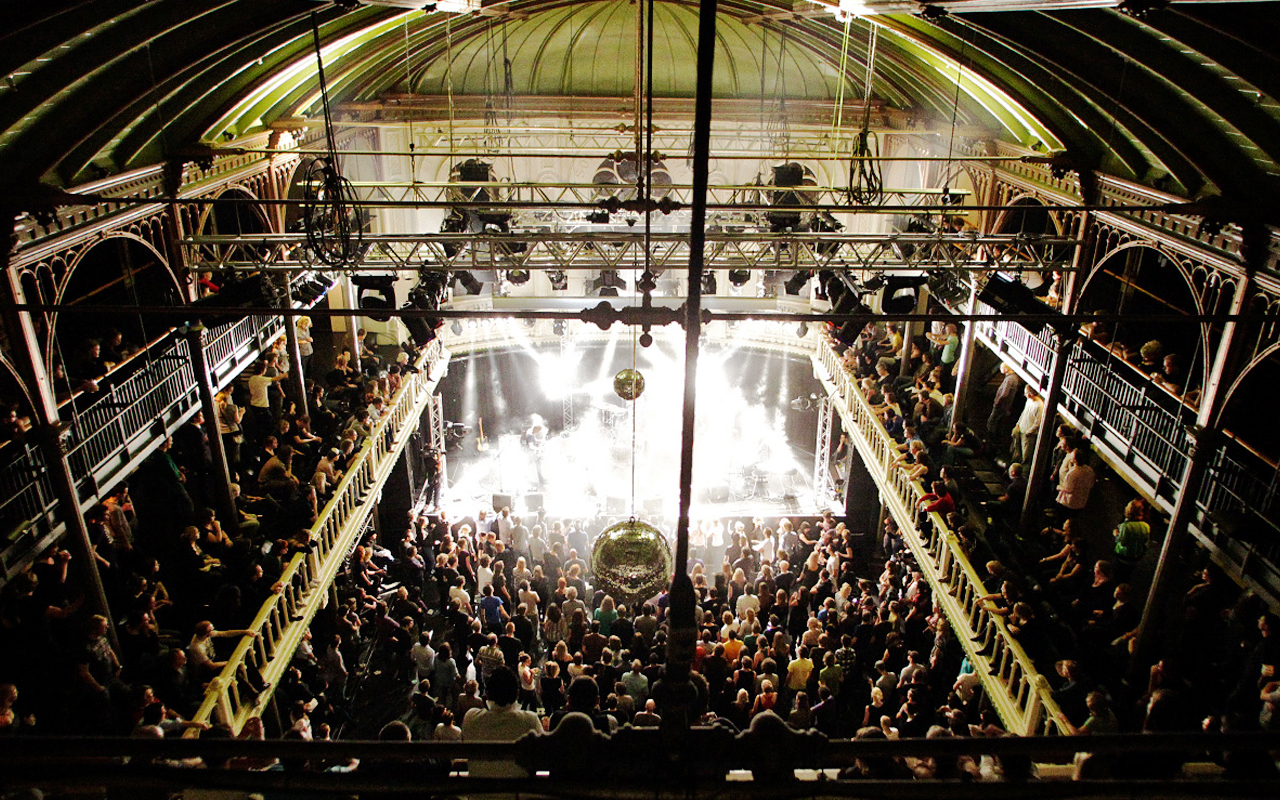
Even though Amsterdam is not your typical religious city, there is one sanctuary that locals faithfully visit to honour their gods. Musical gods, that is. Its name is Paradiso and it is turning 50 this year. Amsterdam Museum is celebrating this birthday with an exhibition.

Free religion
The venue we now know as Paradiso was constructed in 1880 by a religious man, Reverend Herman Hugenholtz. He founded the Vrije Gemeente (Free Community), which proposed a free type of religion. Because of the neighbouring prison, the piece of land at Weteringschans was cheap. Soon, Hugenholtz had enough funding to construct a building, asking Dutch architect Gerlof Salm to design it. Vrije Gemeente allowed any type of religion, as long as people’s hearts were in it. It was meant as a breakaway from the strict Dutch Calvinistic principles, and it was befitting of the city of Amsterdam as well as a sign of the times of the nineteenth century.
Provo-movement
Hugenholtz’s Vrije Gemeente was not a big success. Its greatest problem was a lack of active community members. Eventually, Vrije Gemeente sold the premises in 1965. The initial idea was to turn the building into a hotel. But a group of people called the Provo-Movement had a say in the matter. Provo (short for ‘to provoke’) promoted radical change and a high level of freedom. Provos based their ideas on anarchism, rejecting any form of authority. Provos advocated the right to demonstrate and were strong believers in love and freedom of speech. While these are ideas that today sound fairly reasonable, at the time Provos were considered a threat to the state.

Paradiso
At some point in these tumultuous times, squatters decided to occupy the old Vrije Gemeente building. The municipality of Amsterdam eventually agreed to let the building be used for recreational purposes. On 30 March 1968, the Cosmic Relaxation Center Paradiso opened its doors for the first time. Ever since, Paradiso has aimed at bringing together talented people and a captivated audience.
Paradiso today takes its place alongside the most legendary music venues of the twentieth century. Ever since 1968, Paradiso’s audience has witnessed some of the most famous artists and some legendary concerts. The shows expand effortlessly from the hippie era of the 1960s, through the punk years, into the age of dance and techno. And they include pretty much everything in between and after.

Legendary concerts
One of the most famous was a concert by Pink Floyd, in the same year that Paradiso opened. The venue was the perfect spot for this band, partly due to the fact that people could smoke weed freely. In the latter half of 1970s, punk found its way to the Netherlands. Bands like The Sex Pistols and The Stranglers drove audiences wild. In 1977, The Sex Pistols transformed Paradiso into a punk palace. It was a welcome success since the venue was on the verge of bankruptcy. The change from hippie culture to that of punk brought a new era of prosperity to Paradiso. It saw the likes of Blondie, the Ramones and Iggy Pop on the stage.
One of the most special performances that many Paradiso fans remember is the 1981 concert of Prince. It is so legendary, that if you would gather all the people who claim to have been there, they wouldn’t even fit in the building. This performance established a special connection between Prince and his Dutch audience. It was a bond would last throughout his lifetime. In the same year, a new rock band from Ireland took the stage, too. Their name is U2.
The list goes on and on. Other famous stars and bands such as David Bowie, Nirvana, Amy Winehouse, Snoop Dogg and Adele have all performed at the Amsterdam pop temple. For many artists, including The Rolling Stones, performing in Paradiso is something special. The secret is the intimate atmosphere, with the audience at such a close distance. Many music fans travel to Amsterdam especially to attend a concert at Paradiso. Besides being a place for the best concerts, you can also witness wild and extravagant parties, artist meetings and debates. Over 26,000 events have taken place over the course of the past 50 years.
50 Years Paradiso Paradiso
has grown to become a world-famous venue, one that has become part of Amsterdam’s cultural heritage. And the best place to learn more about it in the following months is the Amsterdam Museum. The exhibition 50 Years Paradiso tells the story of Paradiso from the moment it opened its doors in 1968. It shows the audience how Paradiso became a magnet for young people from all over the world due to the music and the drugs sold there. The exhibition also portrays Paradiso as a trendsetter, as it is always looking for new music genres. By presenting all sorts of musical styles, Paradiso’s programming is a reflection of Amsterdam’s cultural diversity. The exhibition also offers an inside look at various Amsterdam subcultures.
About 200 photos of concerts, artists, parties and visitors are displayed, together with special posters of the most memorable concerts. One special story is told by the album cover from The Rolling Stones’ album Stripped. The legendary band performed at Paradiso on two consecutive days in May 1995, during which they recorded tracks for their album. For the occasion, The Rolling Stones had the big concert hall decorated to resemble a club in New Orleans. They even created a special extra balcony. One of the permanent balconies at Paradiso was later added based on this design.
About the exhibition, 50 years of Paradiso
The exhibition at Amsterdam Museum not only shows visitors the story of Paradiso, they can also listen to it. You can even indulge yourself with live recordings made of concerts held at the pop temple. Maz Weston, a programmer at Paradiso since the late 1980s, has produced a special audio tour podcast. Weston moved to Amsterdam in 1988, where she organized the first acid house parties. In her audio tour, she provides a behind-the-scenes look at Paradiso, by sharing her experiences as well as those of her predecessors.
Contact

Most Popular
-

Extra
Best All You Can Eat Restaurants Amsterdam
XX
-

Extra
15 Best Restaurants in the Jordaan Amsterdam
Discover Amsterdam
-

Extra
9 Best Thai Restaurants in Amsterdam
Discover Amsterdam
-

Extra
Best Spas in Amsterdam
Discover Amsterdam
-

Extra
Best Asian Restaurants Amsterdam
Where to go for the tastiest Asian dishes, traditional sushi and the freshest sashimi

Extra
Unit17
At Unit17 you find great brands such as: A Fish Named Fred, a shirt brand with lots of…
Amsterdam Centrum

Extra
IJ-Hallen Flea Market
Located in Amsterdam Noord, IJ-Hallen is the largest and most atmospheric flea market in Europe. Every 3rd week…
Amsterdam Centrum

Extra
Guerlain Spa
Waldorf Astoria’s recently introduced 90-minute Orchidée Impériale Skin Light Treatment (€230) may make you forget every rejuvenating facial…
Amsterdam Centrum

Extra
Summer Breeze Latin Festival
Summer Breeze Latin Festival 2018 is in the middle of the beautiful Vondelpark on Sunday the 27th of…
Amsterdam Centrum

Extra
Winter Village
The Winter Village in Amstelveen is the perfect place to enjoy a day of shopping combined with a…
Amsterdam Centrum

Extra
De Tropen
What other to expect from De Tropen, located in the Royal Tropical Institute the Tropenmuseum, then for it…
Amsterdam Centrum

Extra
Amsterdam in October 2018: Goodbye High Season, Hello fall
Amsterdam is an eventful city all year round. So no matter the season, weather or month, there are…
Amsterdam Centrum
















